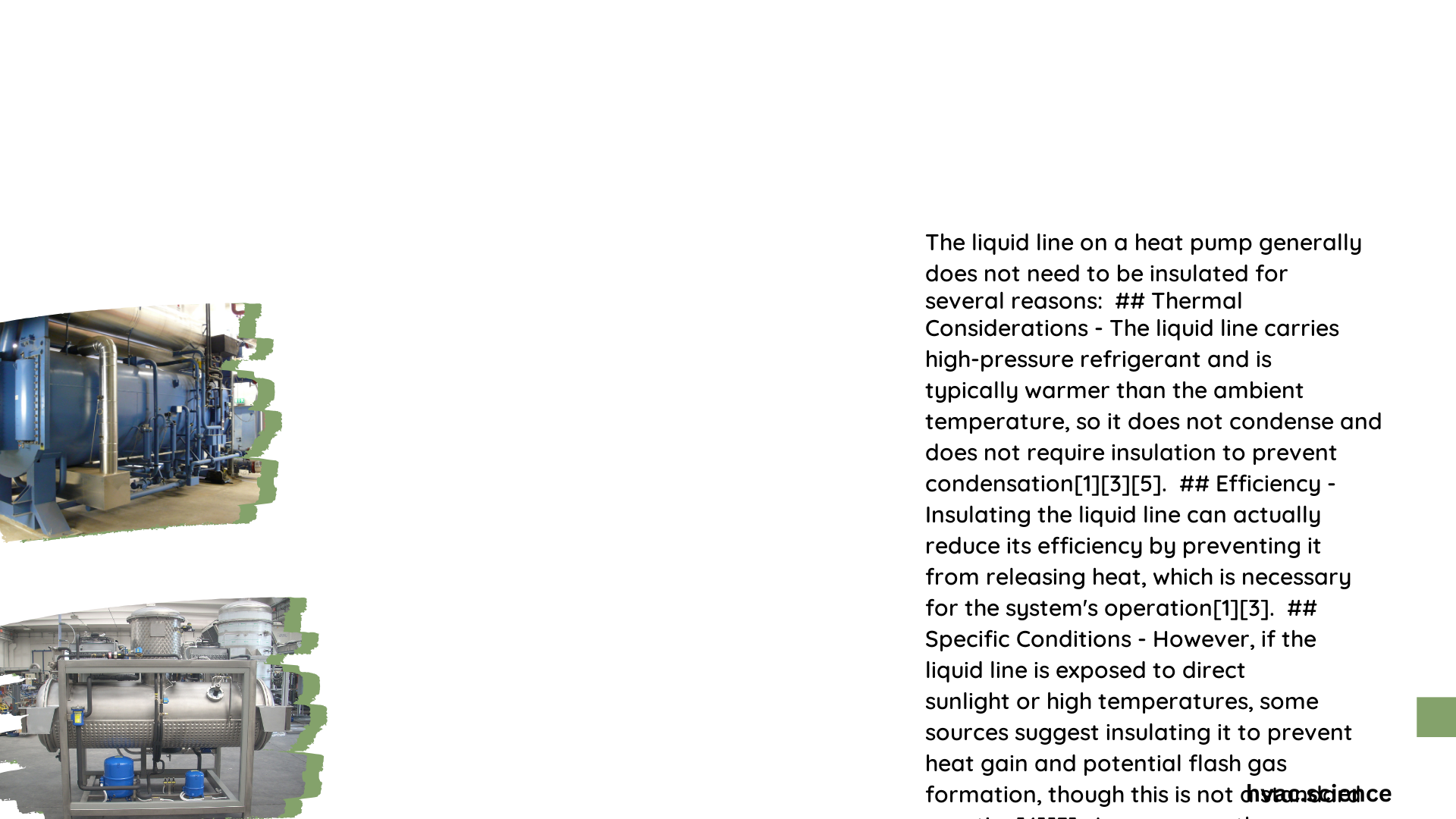Heat pump liquid line insulation represents a nuanced technical decision involving multiple performance and environmental factors. Homeowners and HVAC professionals must carefully evaluate specific installation conditions, ambient temperatures, and system design to determine whether insulating the liquid line will provide meaningful efficiency improvements or potential system benefits.
What Determines the Need for Liquid Line Insulation?
Why Consider Insulating Liquid Lines?
Heat pump liquid line insulation isn’t a one-size-fits-all solution. Several critical factors influence the decision:
- Environmental Conditions
- Ambient temperature variations
- Exposure to direct sunlight
-
Installation location (attic, outdoor, indoor)
-
System Performance Metrics
- Refrigerant subcooling requirements
- Potential flash gas prevention
- Energy efficiency goals
How Does Insulation Impact Heat Pump Efficiency?
| Insulation Factor | Performance Impact | Efficiency Potential |
|---|---|---|
| Temperature Stability | Moderate | 2-5% Improvement |
| Flash Gas Prevention | High | 3-7% Energy Savings |
| Subcooling Maintenance | Moderate | 1-4% Performance Boost |
Refrigerant Line Thermal Dynamics
The liquid line typically operates at temperatures around 110-130°F (43-54°C). Insulation helps stabilize this temperature, preventing unwanted heat absorption and maintaining optimal refrigerant state.
What Materials Work Best for Liquid Line Insulation?
Recommended insulation materials include:
- Closed-cell elastomeric foam
- Polyethylene-based insulation
- Rubber-based thermal barriers
Installation Considerations
- Ensure proper thickness (typically 1/2 inch)
- Use UV-resistant coatings for outdoor applications
- Maintain continuous insulation coverage
When Should You Definitely Insulate?
Critical scenarios demanding liquid line insulation:
– Extremely hot climates
– Unconditioned spaces like attics
– Direct sunlight exposure
– High ambient temperature environments
Cost-Benefit Analysis
Insulation Investment Breakdown:
– Material Cost: $50-$100 per roll
– Professional Installation: $150-$300
– Potential Energy Savings: 3-7% annually
Professional Recommendations
HVAC experts suggest:
– Consult manufacturer specifications
– Evaluate specific system design
– Consider local climate conditions
– Perform professional energy assessment
Conclusion

While liquid line insulation offers potential benefits, its effectiveness depends on multiple variables. Homeowners should conduct a comprehensive evaluation of their specific heat pump installation environment before making a definitive decision.
Practical Takeaway
Insulating the liquid line can provide marginal efficiency improvements, but it’s not universally necessary. Professional assessment remains the most reliable approach.
